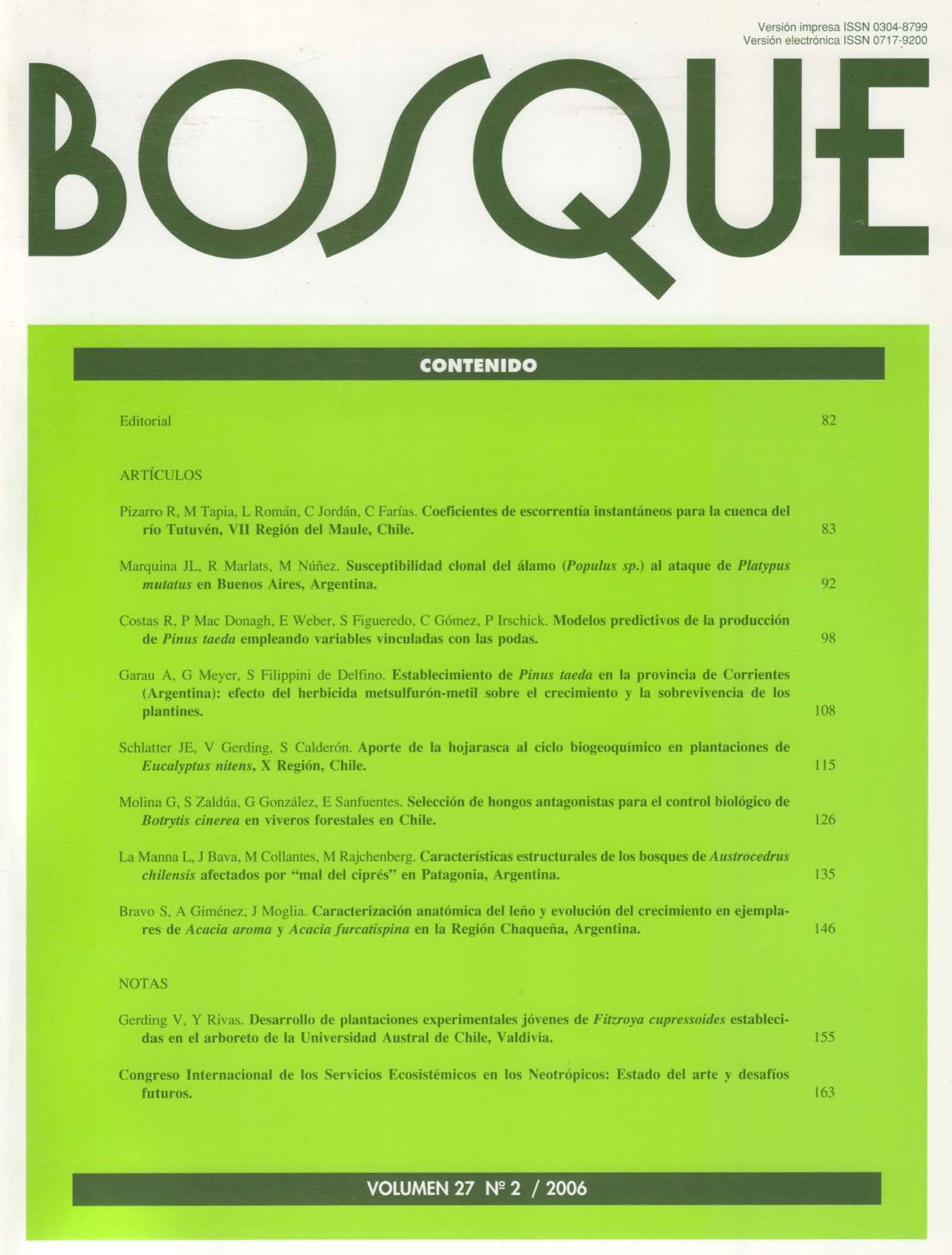Características estructurales de los bosques de Austrocedrus chilensis afectados por “mal del ciprés” en Patagonia, Argentina
Conteúdo do artigo principal
Resumo
La distribución de los bosques de Austrocedrus chilensis incluye un área de alta variabilidad climática, topográfica y edáfica. Estos bosques sufren un proceso de mortalidad masiva conocido como “mal del ciprés”. En este estudio se caracterizó la estructura de los bosques de A. chilensis afectados por “mal del ciprés” en distintos tipos de suelo. Se evidenciaron tres tipos de estructuras de bosque: (a) rodales con dominancia de árboles de diámetro a 1,3 m de altura (DAP) menor a 15 cm, con bajos valores de área basal y altura dominante, asociados a suelos no volcánicos o volcánicos no alofanizados; (b) rodales con predominio de los árboles de 5 hasta 35 cm de DAP, con valores intermedios de área basal y altura dominante, asociados a suelos volcánicos alofanizados; (c) rodales con predominio de los árboles de 5 hasta 45 cm de DAP y con árboles remanentes de gran porte, con valores máximos de área basal y altura dominante, asociados a sitios aledaños a cursos de agua con suelos aluviales o volcánicos. El “mal del ciprés” estuvo presente en los distintos tipos de estructura del bosque, evidenciando que la enfermedad no está restringida a una estructura en particular.

